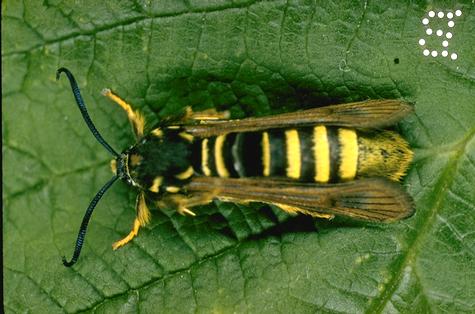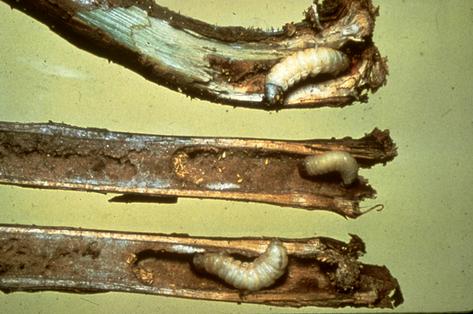Identification
Raspberry crown borer larvae have whitish bodies with brown heads. They can be up to 1 inch long. Adults are clear-winged moths with black and yellow bands on their bodies.

Life Cycle
Raspberry crown borer requires 2 years to complete one generation. Adults emerge from the crown area in late summer and lay eggs on leaves and stems. Larvae penetrate the bark and remain there through winter. Feeding occurs inside canes and crown area during the next two growing seasons.
Damage
Plants affected by crown borers lack vigor, and portions of the plant may be stunted and weakened. The lateral growth wilts in spring and the entire cane may later die. Cutting open lower canes or the crown area reveals worms tunneling through the plant tissue.

Solutions
Keep plants properly irrigated and vigorous, since borers are attracted to stressed plants. Prune out and destroy infested shoots and canes.
